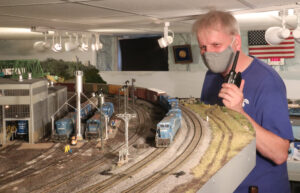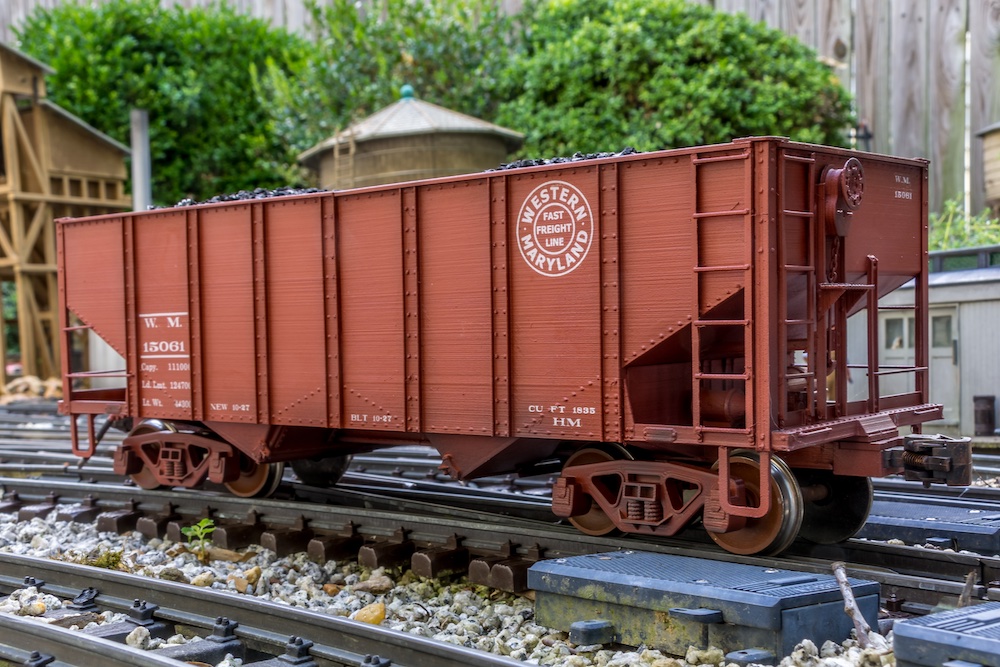Hosting a virtual operating session is change.
During a thoughtful dinner conversation, a friend quipped: “Count on two things. People always complain about the way things are and they always complain about change.”
But our hobby numbers remarkably resourceful people who do change. When COVID-19 protocols had people hunkering down, operating sessions began to reappear, in new form.

One layout owner explained how he adapted. His normal sessions need a roster of almost a dozen. Instead, he invited three close friends to a limited session, choosing them because he believed they had observed health guidelines faithfully. This small number and the limited operating scheme he designed kept masked operators separated far enough in the layout room to respect physical distancing. I ran several sessions like these on my own layout, using road switching jobs. The pace of operation slowed because I normally assign them to two-man crews. Others described similar experiences and noted that fast clock operation approached 1:1.
Some tech-savvy layout owners have begun virtual operating sessions that could transform our hobby. Participants join via Skype or some similar Voice over Internet Protocol (VoIP) app. Engineers and those in supervisory roles, such as dispatcher and trainmaster, work from home. Only three or four operators are physically present, working as conductors.
Cameras are placed at key locations so off-site participants can see important activity. Engineers substitute JMRI (Java Model Railroad Interface) open source freeware and smartphone apps such as WiThrottle and Engine Driver for wireless throttles. CTC panels on laptop screens adapt to remote locations easily. Family Radio Service radios are patched into the VoIP network for communication between operators.
Dave Abeles hosted several such virtual sessions on his Conrail Onondaga Cutoff layout. I joined Dave and three others in his basement, prepared to work as conductor with Rich Wisneski, my off-site engineer. Dave marked us up for ON-10, a road switcher that serves local industries.
The experience was remarkably realistic. Dave set the Cutoff in 1994, so two-man crews like ours using radio communication fit the picture. Rich “boarded” our power and I guided him through the yard to our train as if I rode an engine step.
“Conductor to ON-10, two to a stop for a bad switch.” “One more, ON-10.” “OK west, ON-10. Four to a hitch.” The figures are car counts, which give an engineer the distance seen clear; “hitch” refers to making a coupling. It was realistic to use the radio to direct these moves, because they were all backing moves. Rich would certainly need a second set of eyes if he were seated at the control stand in a prototype engine’s cab.
Realism hit a new level when mainline activity kept us from transmitting during our switching moves without stepping on (interfering with) priority radio traffic between the dispatcher and some through freights. Stymied by this, we hit on the idea to “switch channels,” changing to a different frequency. Many railroads designate yard channels for use in such situations. Smartphones to the rescue! A quick phone call opened a secondary channel so our work could resume.
I’ve been around long enough to witness old-timers grumbling that plastic doomed the hobby. Instead, modelers opened new frontiers in computer-aided design, DCC, and 3-D printing. Engine-mounted miniature cameras could overcome one obvious limitation of virtual sessions; technology will improve others. One day, the operating sessions we miss so dearly will resume. Wouldn’t it be fun to join a session hundreds of miles away, without the complication of longdistance travel?
Resources
Learn more about virtual railroad visits: https://www.trains.com/grw/how-to/virtual-garden-railroad-visits-during-quarantine/
Considering an in-person ops session? Learn more in this article.














If I have to do model railroading this way I will give up the hobby.